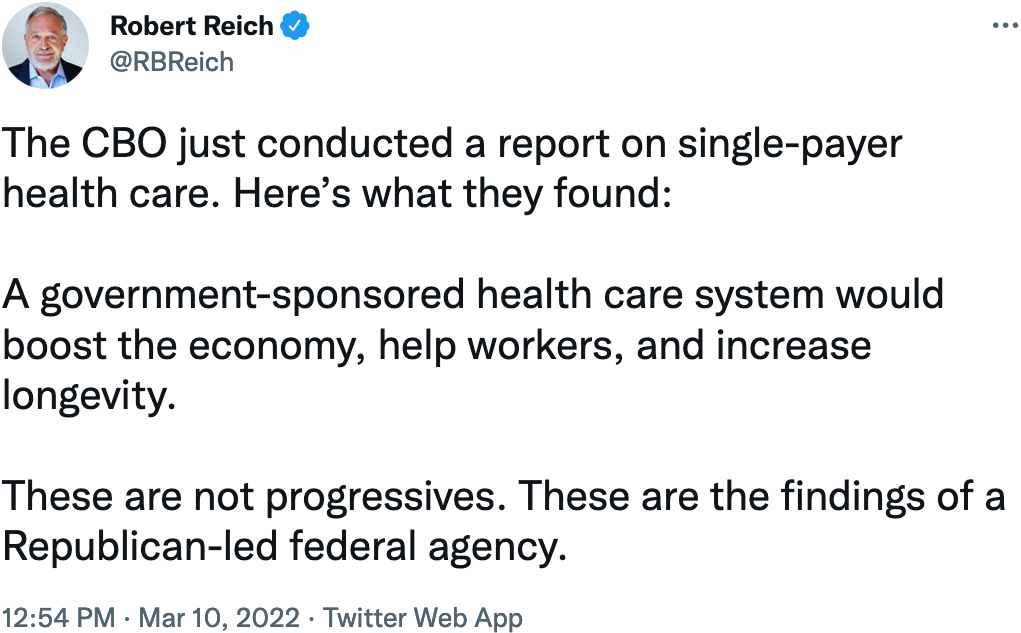PNHP, November 30, 2020
Dear single-payer supporter,
While the dust settles from the elections, many PNHP members are thinking about what the coming year means for Medicare for All. As your new national president, I want to share with you my top five priorities for 2021, both for PNHP as an organization and for our broader movement for health care justice.
1. Set the standard for health care reform: As a new President and Congress prepare to take office, PNHP must be at the forefront of the national debate on health care reform by continuing to provide evidence-based policy solutions. For decades, PNHP has set the gold standard for reform with the Physicians’ Proposal for Single-Payer Health Care Reform and our Prescription for Reform pharma proposal. We must clearly communicate why single-payer Medicare for All — and not incremental reform that preserves private insurance — is the only way to solve people’s health care problems.
2. Move the medical profession towards Medicare for All: The momentum is growing: In 2020 alone, PNHP members have been instrumental in passing single-payer resolutions in the American College of Physicians, the Society of General Internal Medicine, and the Vermont Medical Society, as well as resolutions in several major cities and counties. In 2021, we will expand our resolutions campaign to every specialty society and state and local medical society with PNHP members. We must also strengthen PNHP as the home base for physicians who want to fight for single payer by recruiting more physicians, medical students, and activists to join our organization. We will encourage members to increase their activism and financial support.
3. Confront institutional racism in all forms, and especially in health care: As our Annual Meeting keynote speaker Dr. Rhea Boyd said, “Racism kills, but equality saves lives.” The U.S. health system is plagued with inequity: Compared to whites, people of color are more likely to be uninsured, face discrimination that creates barriers to care, and suffer from preventable health conditions and early death. PNHP must fight not only for equitable and universal coverage, but for the eradication of racism in all forms.
4. Build the grassroots movement by supporting the work of PNHP and SNaHP chapters: The number one takeaway from our Annual Meeting was this: We can only win Medicare for All by continuing our grassroots movement across the nation. That work is already being done by the 100+ local chapters of PNHP and SNaHP. We must support that work by connecting and mentoring chapter leaders and amplifying their local campaigns.
5. Expand our alliances and coalitions: PNHP will never win Medicare for All on our own. We must build power by joining forces with allies at the national and local levels (many PNHP chapters already do this well!). We now work closely with groups like National Nurses United, Public Citizen, HeathCare-NOW, and the Center for Popular Democracy, but we must bring many, many more allies into the fold.
The coming year will bring us extraordinary challenges and opportunities for change. I look forward to working closely with PNHP members to grow our organization and our movement. If you have ideas for me, please don’t hesitate to reach out at pres.rogers@pnhp.org.
Let’s get to work!
In solidarity,
Susan Rogers, M.D.
President
Comment:
By Don McCanne, M.D.
People want to know what we can do to advance the cause of single payer Medicare for All. For a couple of decades these Quote of the Day messages have repeatedly called for education, coalitions, grassroots efforts, and, more recently, addressing institutional racism. These approaches are so fundamental that PNHP’s president, Susan Rogers, has independently come up with the same list. As she says, “Let’s get to work!”
Stay informed! Visit www.pnhp.org/qotd to sign up for daily email updates.

